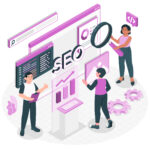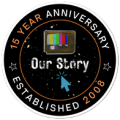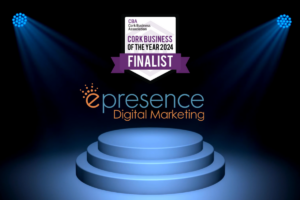Exploring the Dynamic Relationship Between Paid Traffic and Organic SEO Traffic: A Comprehensive Analysis
Table of Contents
- Introduction
- Defining Paid Traffic and Organic Traffic
- Google’s Role in the Correlation
- Synergies Between Paid and Organic Strategies
- Paid Traffic as a Testing Ground for Keywords
- Brand Recognition and Trust
- Conversion Rate Optimization (CRO) and the Impact on ROI
- The Mobile Landscape and Its Impact
- The Role of Content Quality and Relevance
- The Impact of Social Media on the Correlation
- The Buyer’s Journey: Navigating the Crossroads
- The Attribution Conundrum: Navigating the Credit Game
- SEO Best Practices for Maximizing the Correlation
- Conclusion
Introduction:
In the ever-evolving landscape of digital marketing, the relationship between paid traffic and organic SEO traffic remains a focal point for SEO managers and marketers alike. Understanding the correlation between these two traffic sources is essential for devising a well-rounded and effective online marketing strategy. This article delves into the intricacies of the dynamic interplay between paid and organic traffic, drawing insights from relevant studies and applying SEO best practices to shed light on optimizing this symbiotic relationship.
 Defining Paid Traffic and Organic SEO Traffic:
Defining Paid Traffic and Organic SEO Traffic:
To comprehend the correlation between paid and organic traffic, it’s crucial to first define these terms. Paid traffic refers to visits generated through paid advertising, such as pay-per-click (PPC) campaigns, social media ads, or display advertising. On the other hand, organic traffic encompasses visits driven by unpaid search engine results which can be improved by making use of our professional SEO Services in Cork. Achieving a balance between these two sources is vital for a holistic digital marketing strategy.
Google’s Role in the Correlation:
Google, being the dominant search engine, plays a pivotal role in shaping the dynamics between paid and organic traffic. The search engine giant constantly updates its algorithms to deliver more relevant and personalized results to users. Google’s SERP layout, featuring paid ads at the top and organic results below, highlights the interconnectedness of these two traffic sources.
Studies have consistently shown a correlation between high-ranking organic results and a reduced reliance on paid advertising. According to a study by Backlinko, pages appearing on the first page of Google’s search results receive significantly more organic clicks, diminishing the need for supplementary paid promotion. This underscores the importance of organic SEO efforts in capturing user attention and driving traffic without the associated costs of paid advertising.
 Synergies Between Paid and Organic SEO Strategies:
Synergies Between Paid and Organic SEO Strategies:
While the correlation indicates a potential reduction in reliance on paid traffic with high organic rankings, the synergies between paid and organic strategies are noteworthy. Numerous studies found that when a brand appears in both paid and organic search results, there is a notable increase in clicks and a higher likelihood of conversion. We can attest to these findings through our own experience.
This phenomenon, often referred to as the “double-dipping” effect, implies that users are more likely to click on a result when they see a brand both in the paid and organic sections of the SERP. This emphasizes the importance of a unified marketing approach, where paid and organic strategies complement each other to enhance visibility and credibility.
Paid Traffic as a Testing Ground for Keywords:
One of the practical applications of paid traffic in conjunction with organic efforts lies in keyword testing. Paid advertising allows marketers to experiment with various keywords, ad copies, and landing pages to assess their performance. The insights gained from paid campaigns can inform organic SEO strategies, helping to identify high-performing keywords and optimize on-page content accordingly.
By analyzing the click-through rates (CTRs), conversion rates, and other metrics from paid campaigns, SEO managers can refine their organic keyword targeting, tailoring content to align with user intent and preferences. This iterative process enables a more data-driven and effective organic SEO strategy.
 Brand Recognition and Trust:
Brand Recognition and Trust:
Studies have consistently shown that the combination of paid and organic visibility enhances brand recognition and trust. Studies reveal that users tend to trust brands more when they appear in both paid and organic search results. This reinforcement creates a sense of credibility and legitimacy, positively impacting user perceptions.
The synergy between paid and organic efforts contributes to a comprehensive online presence, fostering trust and confidence among users. A strong brand presence across multiple touchpoints on the search results page reinforces the brand’s authority in its industry.
Conversion Rate Optimization (CRO) and the Impact on ROI:
Understanding the correlation between paid and organic traffic extends beyond mere visibility. Conversion rate optimization (CRO) is a critical aspect of digital marketing that directly influences the return on investment (ROI) for both paid and organic channels.
Studies emphasize the importance of aligning paid and organic strategies with CRO principles. A seamless user experience, compelling call-to-actions, and consistent messaging across paid and organic touchpoints contribute to higher conversion rates.
Implementing A/B testing, analyzing user behaviour, and optimizing landing pages based on insights from both paid and organic campaigns can lead to improved conversion rates. This holistic approach ensures that the investment in both paid and organic channels yields the desired results, ultimately maximizing the ROI.
 The Mobile Landscape and Its Impact:
The Mobile Landscape and Its Impact:
As mobile usage continues to surge, the correlation between paid and organic traffic has become more pronounced in the mobile landscape. Mobile search results often feature paid ads prominently, and users are more likely to engage with these results due to the limited screen space.
Studies, such as those conducted by Statista, highlight the increasing dominance of mobile search, with a significant percentage of users relying on smartphones for their online activities. For SEO managers, this underscores the importance of mobile optimization in both paid and organic strategies to capture the growing mobile user base.
Optimizing for mobile-friendliness, ensuring fast page load times, and creating responsive ad creatives are crucial steps in aligning paid and organic efforts for the mobile audience. The correlation between mobile search behaviour and the interplay between paid and organic strategies presents a valuable opportunity for marketers to enhance their digital presence.
The Role of Content Quality and Relevance:
At the core of any successful SEO strategy, be it paid or organic, lies the quality and relevance of content. Content serves as the bridge between paid advertisements and organic search results, influencing user engagement and satisfaction. Studies consistently emphasize the importance of creating high-quality, relevant content that meets user intent and provides value.
Search engines, including Google, prioritize content that aligns with user queries and offers valuable insights. SEO best practices dictate the creation of content that addresses user needs, incorporates relevant keywords naturally, and is structured for easy consumption.
Paid advertising campaigns that echo the same messaging and value proposition as organic content contribute to a cohesive user experience. This alignment strengthens the correlation between paid and organic efforts, fostering a seamless journey for users from initial discovery through conversion.
 The Impact of Social Media on the Correlation:
The Impact of Social Media on the Correlation:
The relationship between paid and organic traffic extends beyond search engines to social media platforms. Social media advertising has become an integral component of digital marketing, with platforms like Facebook, Instagram, and Twitter offering robust paid advertising solutions.
Studies, such as the one conducted by HubSpot, highlight the increasing reliance on social media for product discovery and research. Integrating social media advertising with organic social efforts can amplify brand visibility, drive traffic, and enhance overall online presence.
By leveraging the targeting capabilities of social media ads and aligning them with organic social content, marketers can create a cohesive online presence. This synergy enhances the overall impact of digital marketing efforts, contributing to a holistic strategy that resonates with the target audience across various online touchpoints.
The Buyer’s Journey: Navigating the Crossroads:
Understanding the buyer’s journey is paramount for SEO managers seeking to leverage the correlation between paid and organic traffic. The buyer’s journey typically consists of three key stages: awareness, consideration, and decision. Paid advertising and SEO play distinctive roles at each stage, working in tandem to guide users seamlessly through the conversion funnel.
-
- Awareness Stage:
- Paid Advertising: At the awareness stage, paid advertising shines as a beacon to capture the attention of potential customers. Through targeted ads on search engines and social media platforms, brands can introduce themselves to a wider audience.
- SEO: Concurrently, SEO efforts contribute to brand visibility by optimizing content for relevant keywords. Organic search results, when aligned with paid advertising messaging, reinforce brand recall and authority.
- Consideration Stage:
- Paid Advertising: Paid ads continue to play a crucial role in the consideration stage by retargeting users who have shown initial interest. Display ads and social media retargeting campaigns keep the brand in front of users, nurturing their consideration.
- SEO: In the consideration stage, organic content becomes pivotal. Informative blog posts, product reviews, and comparison guides optimized for relevant keywords provide valuable information, establishing the brand as an industry authority.
- Decision Stage:
- Paid Advertising: Paid channels can strategically present promotions, discounts, or compelling offers to users who are on the verge of making a decision. Remarketing through paid ads can tip the scale in favour of conversion.
- SEO: Organic content tailored for users in the decision-making phase, such as product pages and testimonials, reinforces trust and credibility. High-ranking organic results instil confidence in users as they finalize their choices.
- Awareness Stage:
 The Attribution Conundrum: Navigating the Credit Game:
The Attribution Conundrum: Navigating the Credit Game:
Attribution modelling involves assigning credit to various touchpoints along the customer journey, helping marketers understand which channels contribute most to conversions. Paid advertising and organic search often find themselves in a complex attribution game, with each vying for a share of the credit, this phenomenon is more evident in industries with longer sales cycles requiring multiple visits to the website from various sources.
-
- First-Touch Attribution:
- Paid Advertising: Paid channels often excel in first-touch attribution, being the initial point of contact that introduces users to a brand.
- SEO: Organic search can also claim credit for first-touch interactions, especially when users discover a website through a specific search query.
- Last-Touch Attribution:
- Paid Advertising: Last-touch attribution models may credit paid channels for the final click leading to a conversion.
- SEO: Organic search results can also stake a claim to last-touch attribution, particularly when users directly navigate to the website from an organic search result.
- Multi-Touch Attribution:
- Paid Advertising and SEO: Multi-touch attribution models, which assign value to multiple touchpoints in the customer journey, provide a more nuanced view. Both paid and organic channels contribute at various stages, and understanding this interaction is crucial for a balanced marketing strategy.
- First-Touch Attribution:
SEO Best Practices for Maximizing the Correlation:
Applying SEO best practices is essential to capitalize on the correlation between paid and organic traffic. Here are key strategies to enhance your digital marketing synergy:
-
- Keyword Harmony:
- Align keywords used in paid advertising with your organic SEO strategy for a unified brand message, don’t be afraid to target specific keywords in both strategies to increase trust and CTR.
- Content Synchronization:
- Ensure consistency in messaging across paid ad copies and organic content to reinforce brand identity.
- Landing Page Optimization:
- Optimize landing pages for both paid and organic traffic, providing a seamless user experience.
- Data-Driven Insights:
- Leverage data from paid campaigns to refine organic keyword targeting and content strategies.
- Mobile Optimization:
- Optimize for mobile devices, as mobile users often encounter paid ads prominently in search results.
- Social Media Integration:
- Integrate paid social media campaigns with organic social efforts for a cohesive brand presence.
- Conversion Rate Optimization (CRO):
- Implement CRO principles across both paid and organic channels to maximize conversion rates.
- Local SEO Focus:
- Prioritize local SEO efforts, as paid and organic local search results often influence user decisions.
- Keyword Harmony:
Conclusion:
The correlation between paid traffic and organic traffic is a nuanced and dynamic aspect of digital marketing that requires a strategic and holistic approach. Understanding the interplay between these two sources is crucial for SEO managers aiming to maximize the impact of their online efforts.
As studies have shown, achieving high organic rankings can reduce the reliance on paid advertising, but a balanced and integrated strategy often yields the best results. The symbiotic relationship between paid and organic traffic presents opportunities for testing, optimization, and enhanced brand visibility. It has been shown time and again that investing in acquiring Paid traffic also increases Organic Traffic to a website as a result of the Buyer’s Journey, the Paid Advert may attract visitors initially but they often return via Organic methods.
By aligning paid and organic efforts, marketers can create a unified online presence that resonates with users across search engines, social media, and other digital platforms. The insights gained from studies and the application of SEO best practices are instrumental in navigating this dynamic landscape, ensuring a comprehensive and effective digital marketing strategy. As the digital landscape continues to evolve, SEO managers must stay attuned to emerging trends and adapt their strategies to capitalize on the evolving correlation between paid and organic traffic.






